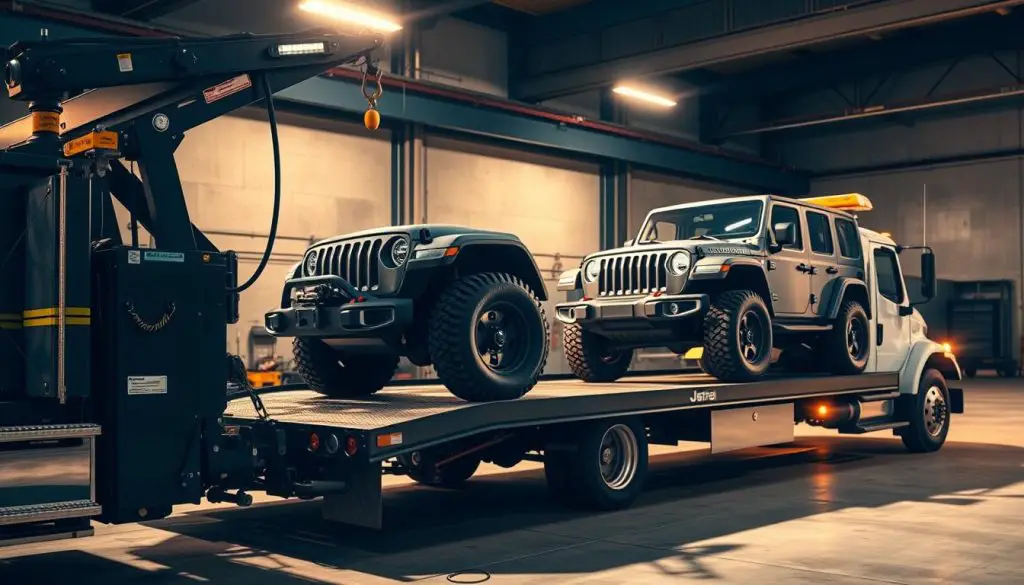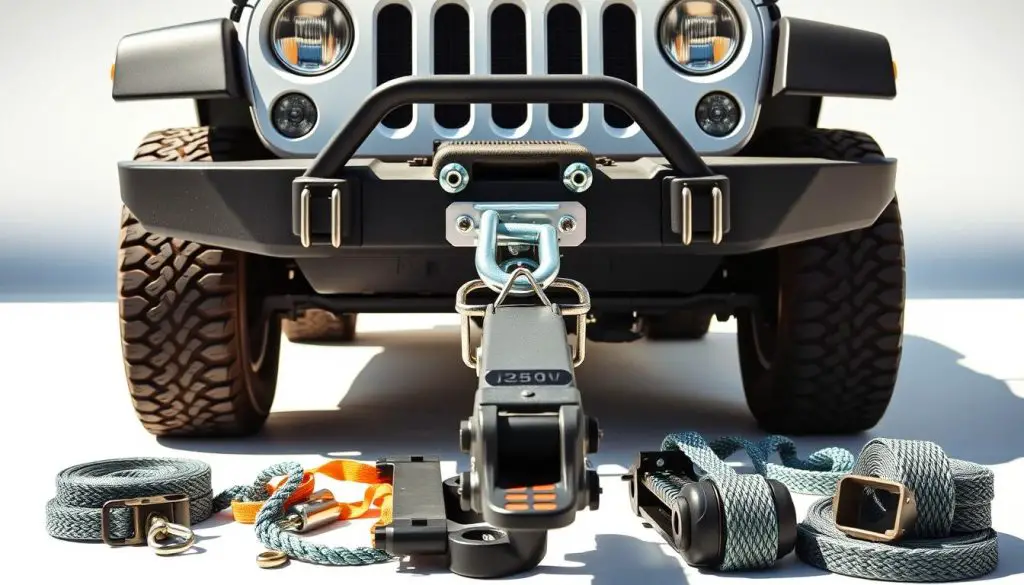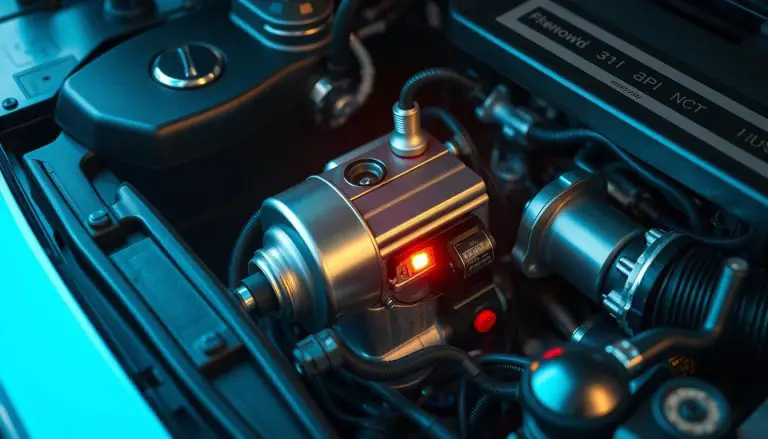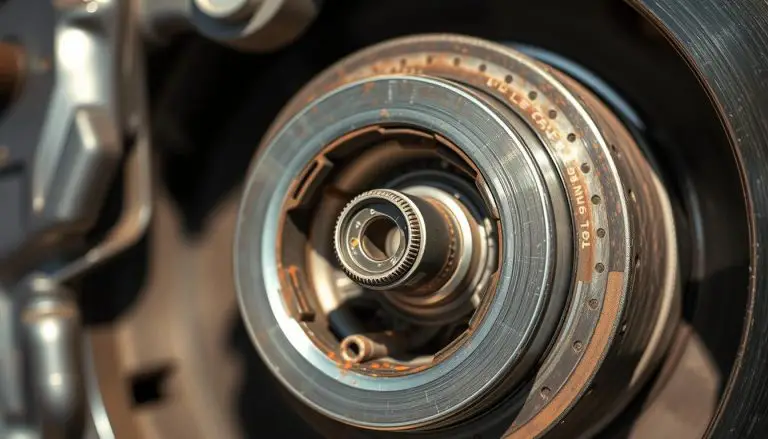Towing a vehicle can be a daunting task, especially when it comes to iconic models like the Jeep Wrangler. Understanding the proper techniques is crucial for safe and successful towing.
Proper towing techniques not only ensure the safety of the vehicle being towed but also protect the towing vehicle and other road users. In this guide, we will walk you through the process of towing a Jeep Wrangler, covering essential steps and precautions.
Whether you’re an experienced off-roader or new to towing, this comprehensive guide will provide you with the knowledge needed to tow your Jeep Wrangler safely and efficiently.
Key Takeaways
- Understand the importance of proper towing techniques for your Jeep Wrangler.
- Learn the step-by-step process for towing your vehicle safely.
- Discover essential precautions to protect your vehicle and others.
- Gain confidence in towing your Jeep Wrangler with our comprehensive guide.
- Ensure a safe and successful towing experience.
Why Jeep Wranglers Are Perfect for Flat Towing
The Jeep Wrangler’s unique features make it an ideal candidate for flat towing, offering a blend of adventure and convenience. Understanding why Jeep Wranglers are well-suited for flat towing involves delving into the mechanics behind this towing method and comparing it to towing other vehicles.
The Mechanics of Flat Towing Explained
Flat towing, also known as dinghy towing, involves towing a vehicle with all four wheels on the ground. This method is particularly beneficial for Jeep Wranglers, as it allows them to be towed without the need for a trailer. The mechanics of flat towing are straightforward: the towed vehicle is connected to the towing vehicle via a tow bar, and the transmission and transfer case are set to the appropriate settings to prevent damage.
Advantages of Towing a Wrangler vs. Other Vehicles
Towing a Jeep Wrangler has several advantages over towing other vehicles. For one, Wranglers are designed with a robust build that can withstand the rigors of flat towing. Additionally, their 4-wheel drive capability and high ground clearance make them well-suited for off-road adventures, even when being towed. The following table highlights some key advantages of towing a Jeep Wrangler compared to other popular off-road vehicles.
| Vehicle | 4-Wheel Drive Capability | Ground Clearance | Towing Ease |
|---|---|---|---|
| Jeep Wrangler | Yes | High | Easy |
| Toyota 4Runner | Yes | Medium | Moderate |
| Ford Bronco | Yes | High | Easy |
Essential Equipment for Flat Towing a Jeep Wrangler
Selecting the right equipment is vital for flat towing a Jeep Wrangler without compromising on safety. The process involves understanding and acquiring several key components that work together to ensure a smooth towing experience.
Base Plate and Tow Bar Selection for Wranglers
The base plate and tow bar are fundamental components of the flat towing setup. The base plate is attached to the Jeep Wrangler, while the tow bar connects the base plate to the towing vehicle. Choosing a tow bar that is compatible with your Wrangler’s model is crucial for stability and safety. For instance, the Roadmaster Tow Bar is a popular choice among Jeep owners due to its durability and ease of use.

Safety Chains and Supplemental Braking Systems
Safety chains and supplemental braking systems are critical for safe towing. Safety chains provide an additional layer of security in case the tow bar fails, while supplemental braking systems help to slow down the towed vehicle. As noted by
“The best tow bars are those that come with integrated safety chains and braking systems, enhancing overall safety.”
It’s essential to select a system that is compatible with your Jeep Wrangler and towing vehicle.
Wiring Harnesses and Lighting Requirements
Wiring harnesses and lighting are also vital for safe flat towing. The wiring harness connects the Jeep Wrangler’s lighting system to the towing vehicle, ensuring that the towed vehicle’s lights are synchronized with the towing vehicle’s lights. Proper installation of the wiring harness is necessary to avoid any electrical issues or safety hazards.
Recommended Accessories for Safer Towing
Additional accessories can enhance the safety and convenience of flat towing a Jeep Wrangler. These may include tow bar storage bags, safety chain hooks, and brake controllers. Using high-quality accessories can make a significant difference in the towing experience. For example, a brake controller can provide more control over the towed vehicle’s braking system.
Preparing Your Jeep Wrangler for Flat Towing
Preparing your Jeep Wrangler for flat towing involves several critical steps to ensure a safe and successful towing experience. It’s essential to understand the specific requirements for your vehicle, install the necessary equipment, and conduct a thorough pre-departure inspection.
Model-Specific Towing Capabilities (JK, JL, TJ Series)
Different Jeep Wrangler models have varying towing capabilities. The JK, JL, and TJ series each have unique requirements for flat towing. For instance, the JK and JL series require a specific setup for the transmission and transfer case to avoid damage during towing. Understanding these model-specific needs is crucial for safe towing.
- JK Series: Requires a two-wire system for brake lights and a specific transfer case setting.
- JL Series: Needs a compatible tow bar and base plate, along with proper wiring for lighting.
- TJ Series: Requires a different base plate and tow bar configuration compared to the JK and JL.
Installing the Base Plate and Tow Bar
Installing the base plate and tow bar is a critical step in preparing your Jeep Wrangler for flat towing. The base plate is typically mounted to the vehicle’s frame, while the tow bar connects to the base plate and the towing vehicle. Ensure that the equipment is compatible with your Wrangler’s model and that it’s installed according to the manufacturer’s instructions.

Setting Up Electrical Connections and Brake Systems
Proper electrical connections and brake systems are vital for safe towing. The wiring harness should be connected to the towing vehicle’s electrical system to synchronize the lighting. Additionally, a supplemental braking system may be required to ensure that the towed vehicle can stop safely.
- Connect the wiring harness to the towing vehicle’s electrical system.
- Test the lighting to ensure it’s functioning correctly.
- Install a supplemental braking system if necessary.
Pre-Departure Inspection Checklist
Before towing your Jeep Wrangler, conduct a pre-departure inspection to ensure everything is in working order. Check the tire pressure, lighting, and braking systems. Verify that all connections are secure and that the tow bar and base plate are properly installed.
- Check tire pressure and condition.
- Test all lighting and electrical connections.
- Inspect the tow bar and base plate for any signs of damage or wear.
Step-by-Step Process of Flat Towing a Jeep Wrangler
The process of flat towing a Jeep Wrangler involves several critical steps that must be followed meticulously to ensure a safe and successful tow.
Connecting Your Jeep to the Towing Vehicle
To begin, you’ll need to connect your Jeep Wrangler to the towing vehicle. This involves attaching the tow bar to both the Jeep and the towing vehicle, ensuring a secure connection. It’s crucial to follow the manufacturer’s instructions for the specific tow bar and base plate being used.
Key considerations include: Ensuring the tow bar is rated for the weight of your Jeep Wrangler and that all connections are secure and properly locked.
Transfer Case and Transmission Settings for Different Models
Different Jeep Wrangler models (JK, JL, TJ) have specific requirements for transfer case and transmission settings when being flat towed. For instance, the JL series requires the transfer case to be in neutral, while the transmission should be in the appropriate gear as specified by the manufacturer.
| Model | Transfer Case Setting | Transmission Setting |
|---|---|---|
| JK | Neutral | Drive |
| JL | Neutral | Park |
| TJ | Neutral | Drive |
Securing Safety Equipment and Testing Connections
Once connected, it’s essential to secure all safety equipment, including safety chains and supplemental braking systems. Testing these connections before towing is critical to ensure they function as expected.
Always refer to the owner’s manual for specific instructions on setting up and testing safety equipment for your Jeep Wrangler.
Disconnecting Your Jeep After Reaching Your Destination
Upon arriving at your destination, carefully disconnect your Jeep Wrangler from the towing vehicle. This involves reversing the steps used for connection, ensuring all equipment is properly stored.
Important steps include: Releasing the tow bar, disconnecting safety chains, and storing the towing equipment securely to prevent damage.
Troubleshooting and Maintenance for Frequently Towed Wranglers
Regular maintenance and troubleshooting are key to ensuring your towed Jeep Wrangler remains in good condition. Frequent towing can put additional stress on your vehicle, making it essential to be proactive about maintenance and aware of potential issues.
Common Issues and Their Solutions
Some common issues encountered while towing a Jeep Wrangler include electrical system malfunctions, brake problems, and issues with the tow bar or base plate. To address these, it’s crucial to:
- Regularly inspect electrical connections and wiring for damage or wear.
- Check brake pads and systems for proper function.
- Ensure the tow bar and base plate are securely attached and show no signs of damage.
Addressing these issues promptly can prevent more significant problems from developing.
Navigating Difficult Terrain While Towing
When towing your Jeep Wrangler, navigating challenging terrain requires careful planning and execution. Reduce your speed and use lower gear when driving uphill or on uneven surfaces. It’s also advisable to have a spotter assist you when maneuvering in tight spaces.
Maintenance Schedule for Towed Jeeps
A regular maintenance schedule is vital for towed Jeeps. This includes:
- Checking tire pressure and condition every month.
- Inspecting brakes and electrical systems before and after long trips.
- Servicing the vehicle’s transmission and transfer case according to the manufacturer’s schedule.
State-by-State Legal Requirements for Flat Towing
Legal requirements for flat towing vary by state, so it’s essential to familiarize yourself with the regulations in the areas you plan to travel. Some states have specific laws regarding towing equipment, lighting, and safety chains. Checking with local authorities or transportation departments can provide the necessary information to ensure compliance.
Conclusion
Flat towing a Jeep Wrangler can be a straightforward process if you’re well-prepared. This comprehensive Jeep Wrangler towing guide has walked you through the essential steps, from selecting the right equipment to understanding the mechanics of flat towing.
A successful flat towing experience relies on careful planning, the right setup, and a thorough understanding of your vehicle’s capabilities. By following this guide, you’ll be well on your way to enjoying your next adventure with your Jeep Wrangler in tow.
Whether you’re heading out on a short trip or a long off-road journey, being prepared is key. With the right knowledge and equipment, you can confidently flat tow your Jeep Wrangler, creating a fun and memorable experience. This flat towing summary highlights the importance of being prepared and knowledgeable about the process.
FAQ
What is flat towing, and is it safe for my Jeep Wrangler?
Flat towing, also known as dinghy towing, involves towing a vehicle with all four wheels on the ground. When done correctly, it is a safe method for towing a Jeep Wrangler, but it requires proper equipment and adherence to the manufacturer’s guidelines.
Which Jeep Wrangler models can be flat towed?
The Jeep Wrangler models that can be flat towed include the JK, JL, and TJ series, but it’s essential to check the specific model year and configuration to ensure compatibility, as not all models are created equal.
What equipment do I need to flat tow my Jeep Wrangler?
To flat tow your Jeep Wrangler, you’ll need a base plate, tow bar, safety chains, supplemental braking system, and wiring harnesses. The specific equipment required may vary depending on the model and year of your Jeep.
How do I prepare my Jeep Wrangler for flat towing?
Preparing your Jeep Wrangler for flat towing involves installing the necessary towing equipment, configuring the transfer case and transmission settings according to the manufacturer’s instructions, and conducting a pre-departure inspection to ensure everything is in working order.
What are the transfer case and transmission settings for flat towing a Jeep Wrangler?
The transfer case and transmission settings for flat towing a Jeep Wrangler vary by model. For example, some models require the transfer case to be in neutral, while others may have specific transmission settings. Consult your owner’s manual or manufacturer’s guidelines for specific instructions.
Are there any state-specific regulations for flat towing a Jeep Wrangler?
Yes, regulations regarding flat towing vary by state. Some states have specific laws governing the use of towing equipment, lighting, and other safety features. It’s crucial to familiarize yourself with the regulations in the areas you plan to travel through.
How often should I perform maintenance on my towed Jeep Wrangler?
Regular maintenance is crucial for a towed Jeep Wrangler. It’s recommended to follow a maintenance schedule that includes frequent checks on the towing equipment, tires, brakes, and other essential systems to ensure safe and trouble-free towing.
Can I flat tow my Jeep Wrangler with an automatic transmission?
Some Jeep Wrangler models with automatic transmissions can be flat towed, but it’s essential to check the specific model and year to confirm compatibility and follow the manufacturer’s guidelines for towing.
What are some common issues that may arise when flat towing a Jeep Wrangler, and how can I troubleshoot them?
Common issues when flat towing a Jeep Wrangler may include problems with the towing equipment, electrical connections, or transmission. Troubleshooting involves identifying the source of the issue and consulting the manufacturer’s guidelines or a professional mechanic for assistance.


